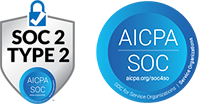Extract, Transform, Load (ETL) is a data integration process that involves three distinct steps: extracting data from multiple sources, transforming it into a usable format, and loading it into a centralized system or data warehouse. In People Analytics, ETL plays a critical role in consolidating workforce data from disparate systems like HRIS, payroll platforms, applicant tracking systems (ATS), and performance management tools, enabling unified analysis and reporting.
For example, an ETL process in HR might extract employee demographic data from an HRIS, transform it by standardizing formats and correcting inconsistencies, and load it into a reporting tool like SplashBI for deeper analysis.
Importance of ETL in People Analytics
HR data is often scattered across various systems and stored in incompatible formats. ETL ensures that this data is cleaned, standardized, and consolidated for effective analysis, leading to better workforce insights and decisions.
Unifying Disparate Data Sources
HR teams use multiple tools for recruitment, payroll, and performance tracking. ETL integrates data from these systems, providing a comprehensive view of the workforce.
Improved Data Quality
The transformation stage of ETL ensures that inconsistencies, duplicates, and missing values are resolved, enhancing the accuracy and reliability of HR analytics.
Faster Decision-Making
With data centralized and readily accessible, HR teams can generate reports and insights more quickly, enabling agile decision-making.
Scalability
As organizations grow and data volumes increase, ETL processes adapt to handle the complexity, ensuring seamless data integration for evolving needs.
Compliance and Governance
ETL processes ensure that HR data adheres to regulatory requirements, such as GDPR, by implementing checks during the transformation stage to identify and mitigate risks.
Challenges in ETL
- Data Complexity: HR data often comes in varied formats and structures, requiring significant effort during the transformation stage.
- Integration Across Platforms: Connecting legacy systems with modern HR tools can be challenging without robust ETL processes.
- Real-Time Data Needs: Traditional ETL processes may not meet the demands for real-time data in fast-paced HR environments.
SplashBI’s Role in ETL for People Analytics
SplashBI simplifies the ETL process for HR teams by automating data extraction, transformation, and loading, ensuring that workforce data is accurate, consistent, and ready for actionable insights.
Seamless Data Extraction
SplashBI integrates with multiple HR systems, such as HRIS, ATS, and payroll platforms, to extract data in real time or batch processes. This ensures that no critical data is left behind, providing a complete dataset for analysis.
Advanced Data Transformation Tools
SplashBI’s transformation capabilities clean, format, and standardize HR data automatically. For example, it can align job titles across systems, remove duplicate employee records, and standardize date formats.
Efficient Data Loading
Once transformed, data is loaded into SplashBI’s robust analytics platform, making it immediately available for reporting and visualization. Whether it’s attrition analysis, diversity metrics, or compensation trends, the data is ready to power insights.
Integration with HR Ecosystems
SplashBI supports seamless integration with popular HR tools like Workday, SAP SuccessFactors, and Oracle Fusion Cloud. This ensures that all HR data flows through the ETL pipeline without compatibility issues.
Automation and Scheduling
SplashBI automates the entire ETL process, allowing HR teams to schedule regular data refreshes. This ensures that the analytics platform always has the latest data, reducing manual intervention and saving time.
Real-Time Data Capabilities
For organizations that need up-to-the-minute insights, SplashBI offers real-time ETL processes. This enables HR leaders to make timely decisions based on the most current data.
Customizable Workflows
SplashBI allows HR teams to define custom ETL workflows, tailoring the process to their unique data and reporting needs.
Conclusion
ETL is a critical process for transforming scattered HR data into a unified resource for decision-making. With SplashBI’s advanced ETL capabilities, HR teams can seamlessly integrate data from multiple sources, improve data quality, and unlock actionable insights.
Learn more about how SplashBI simplifies ETL for People Analytics.



